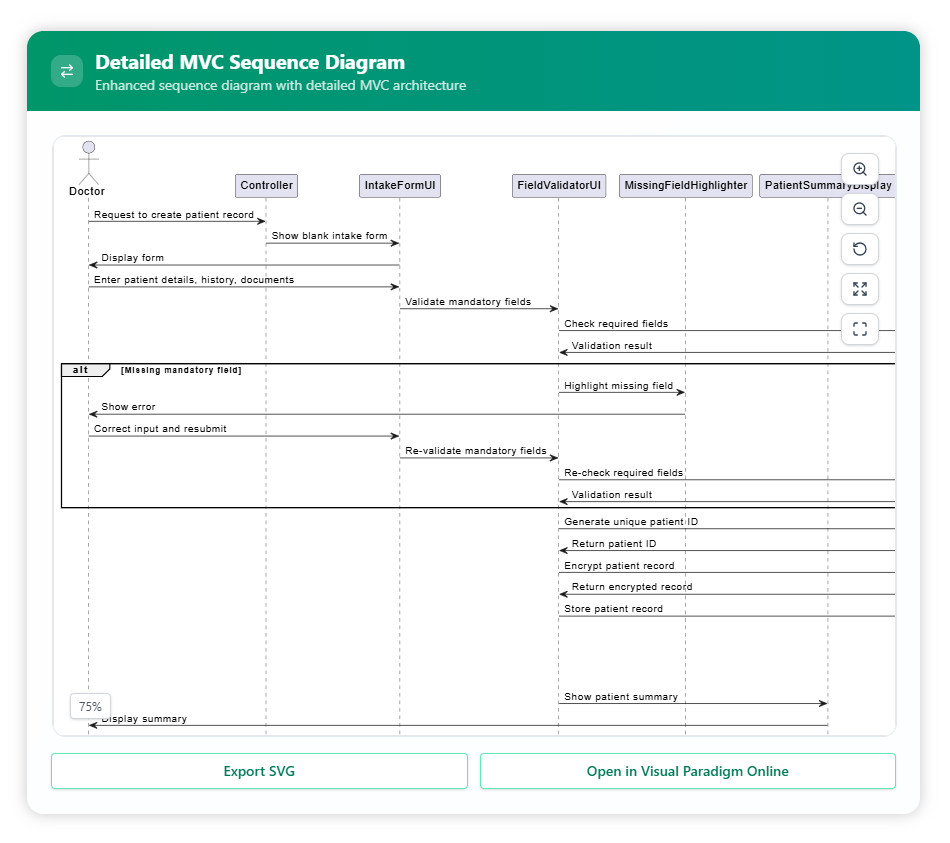Now Reading: CRM Manage Role Based Access Example | AI Sequence Diagram Refinement Tool
-
01
CRM Manage Role Based Access Example | AI Sequence Diagram Refinement Tool
CRM Manage Role Based Access Example | AI Sequence Diagram Refinement Tool
In a CRM environment, security and proper authorization are crucial. The Manage Role Based Access scenario represents how administrators assign or adjust roles to control what different users can access. With the Sequence Diagram Refinement Tool, this process is translated into MVC layers that make visible the relationship between user interface checks and backend validation or encryption services.
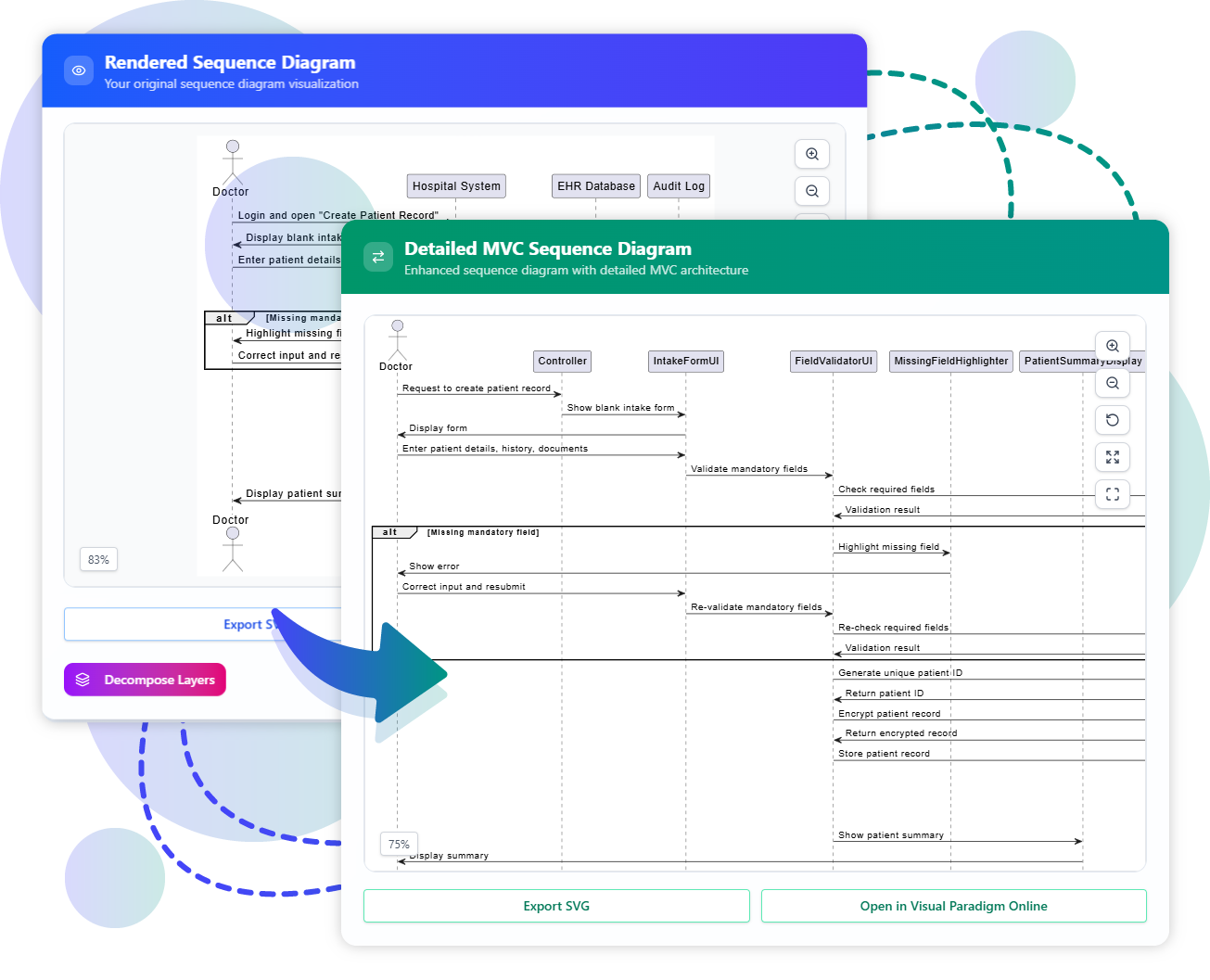
01 | Diagram Input
Begin by entering a sequence diagram in Mermaid or PlantUML that illustrates how roles are created or updated. You can also opt to have the MVC System Architecture Generator produce a suitable diagram automatically.
Sequence Diagram PlantUML Example:
@startuml actor Doctor participant "Hospital System" as System participant "EHR Database" as DB participant "Audit Log" as Log Doctor -> System: Login and open "Create Patient Record" System -> Doctor: Display blank intake form Doctor -> System: Enter patient details, history, documents System -> System: Validate mandatory fields alt Missing mandatory field System -> Doctor: Highlight missing field Doctor -> System: Correct input and resubmit end System -> System: Assign unique patient ID System -> System: Encrypt patient record System -> DB: Store patient record System -> Log: Update audit logs System -> Doctor: Display patient summary @enduml
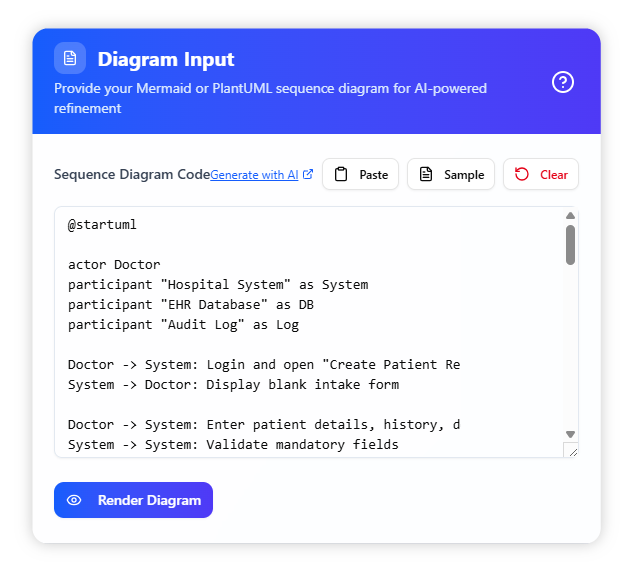
02 | Rendered Sequence Diagram
Use the Render Diagram option to see how the initial flow looks. At this point, the diagram can be exported as SVG or adjusted through Visual Paradigm Online. Once ready to refine, continue with Decompose Layers to uncover more details.
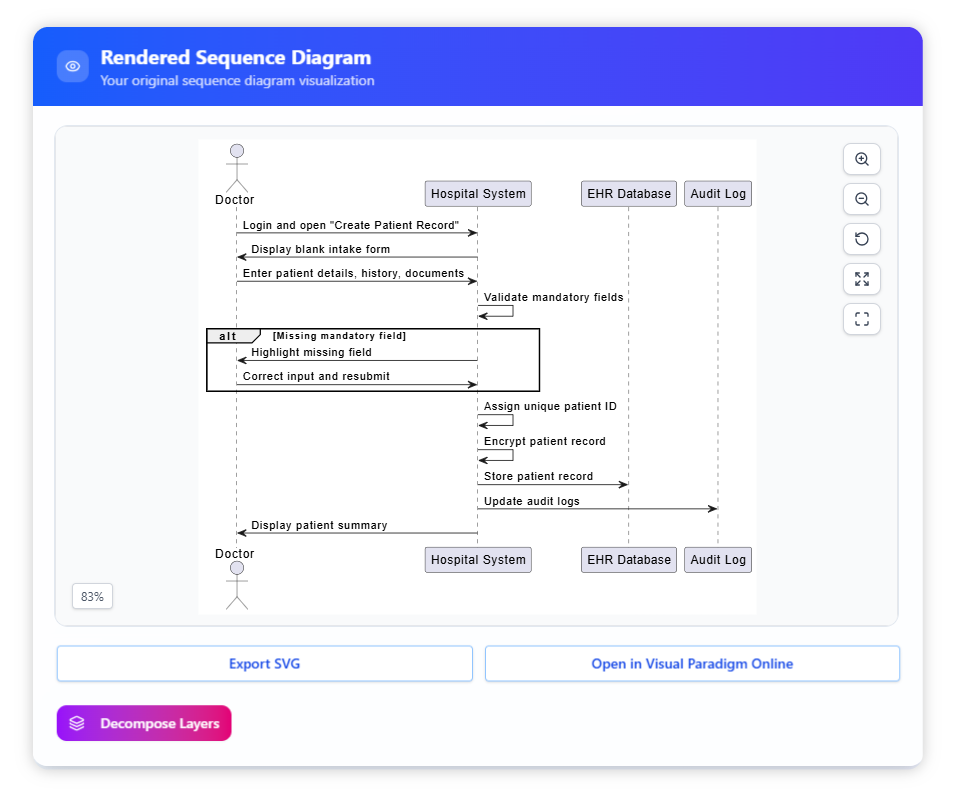
03 | Decomposed Architecture Layers
The AI processes the diagram and organizes the scenario into layers. For role management, it may identify:
- View Objects: IntakeFormUI, FieldValidatorUI, MissingFieldHighlighter, …
- Model Objects: PatientRecordValidator, PatientIDGenerator, PatientRecordEncryptor, …
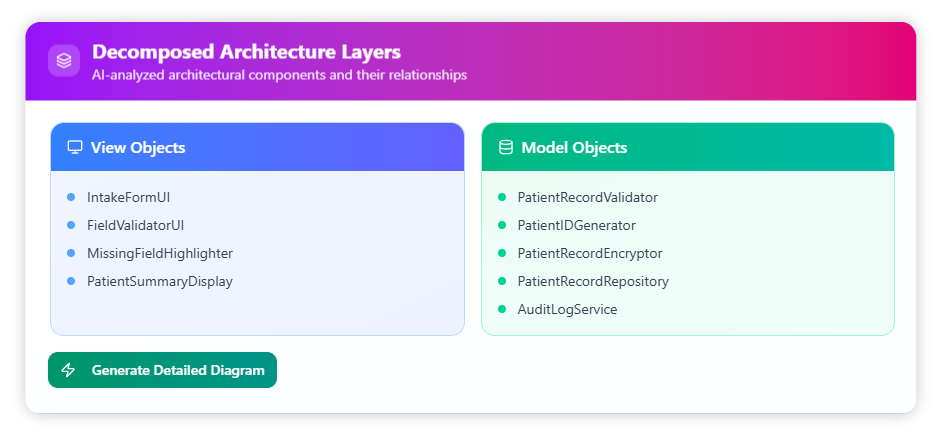
04 | Detailed MVC Sequence Diagram
A comprehensive sequence diagram is then generated, expanding the flow to include validation, ID generation, and encryption logic, along with the user-facing checks. The result can be saved as an SVG or opened in Visual Paradigm Online for further refinement.
